
A 21 part video tutorial of Organic Chemistry II given by Professor Kevin Shea of Smith College
- Subject:
- Chemistry
- Physical Science
- Material Type:
- Full Course
- Lecture
- Lesson
- Provider:
- Smith College
- Author:
- Kevin Shea
- Date Added:
- 03/25/2020
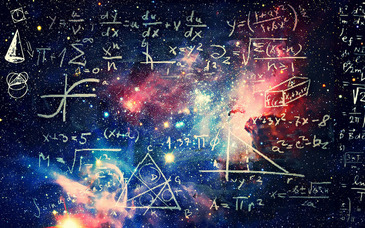

A 21 part video tutorial of Organic Chemistry II given by Professor Kevin Shea of Smith College
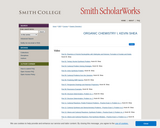
A 37 part video tutorial of Organic Chemistry I, given by Professor Kevin Shea of Smith College
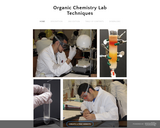
This resource is a PDF of an organic chemistry laboratory textbook designed for the undergraduate organic chemistry student who has never before taken a college-level organic chemistry course. It can also be used for students engaging in upper division courses or independent research who wish to have a refresher in basic laboratory techniques. This resource was not designed with graduate students in mind, and therefore may not be all inclusive in laboratory techniques experienced at that level.
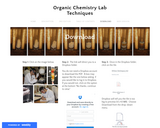
This resource was created by Lisa Nichols (chemistry faculty at Butte Community College in Northern California) as a result of an academic sabbatical leave in the Fall-2015 to Spring 2016 term. The target audience are undergraduate students in organic chemistry.
In this resource you will find theory and procedures on the main organic lab techniques (chromatography, crystallization, extraction, distillation) as well as general concepts on how to set up and heat apparatuses (see the Table of Contents tab for a more complete listing of topics).
All procedures are accompanied by step-by-step pictures, and graphics are heavily utilized throughout the resource.
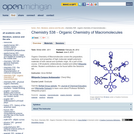
Chemistry 538 - Organic Chemistry of Macromolecules covers the preparation, reactions, and properties of high molecular weight polymeric materials of both natural and synthetic origin. As a part of this course, U-M students collaboratively created and edited÷Wikipediaarticles. Student contributions can be found below, within the "Wikipedia Articles" section.

The traditional approach to teaching Organic Chemistry, taken by most of the textbooks that are currently available, is to focus primarily on the reactions of laboratory synthesis, with much less discussion - in the central chapters, at least - of biological molecules and reactions. This is despite the fact that, in many classrooms, a majority of students are majoring in Biology or Health Sciences rather than in Chemistry, and are presumably taking the course in order to learn about the chemistry that takes place in living things.In an effort to address this disconnect, I have developed a textbook for a two-semester, sophomore-level course in Organic Chemistry in which biological chemistry takes center stage. For the most part, the text covers the core concepts of organic structure, structure determination, and reactivity in the standard order. What is different is the context: biological chemistry is fully integrated into the explanation of central principles, and as much as possible the in-chapter and end-of-chapter problems are taken from the biochemical literature. Many laboratory synthesis reactions are also covered, generally in parallel with their biochemical counterparts - but it is intentionally the biological chemistry that comes first.

Chapter 1: Pericyclic Reactions
Chapter 2: Transition Metal Catalyzed Carbon-Carbon Bond Forming Reactions
Chapter 3: Neighboring Group Participation, Rearrangements, and Fragmentations
Chapter 4: Radical Reactions
Chapter 5: Carbene Reactions

Textbook for ASTRON 102 THE SOLAR SYSTEM at College of the Canyons
Surveys the solar system, including the earth and its motions and seasons; the moon, eclipses, and tides; the content and dynamics of the solar system; planets and their satellites, asteroids, comets, and meteorites; and the evolution of the solar system.

Short Description:
This book is an educational, entertaining, and highly personal memoir written during a global pandemic. It provides an insightful snapshot of the occasionally bumpy yet spiritually transformative cancer journey of a middle-aged, immigrant, and non-partnered academic living in a sunny Canadian prairie province.
Long Description:
This book is an educational, entertaining, and highly personal memoir written during a global pandemic. It provides an insightful snapshot of the occasionally bumpy yet spiritually transformative cancer journey of a middle-aged, immigrant, and non-partnered academic living in a sunny Canadian prairie province.
It will be of interest to anyone who: 1) is or has been on the cancer continuum as a patient, caregiver, family member, or friend; 2) is or strives to be a health professional (oncologist, GP, nurse, social worker, pharmacist, physio- or exercise therapist, etc.); 3) is an administrator, instructor, teaching assistant, or student at a post-secondary institution interested in health sciences, English literature (memoir writing, creative non-fiction, and narratives of illness), Women’s and Gender Studies, Spirituality Studies, Religious Studies, and the Fine Arts; 4) fellow authors and/or readers who like to give writers from the Canadian prairies a chance.
The Appendix includes “Leading Reading Questions” meant to increase everyone’s reading experience and lighten the load of fellow university professors who wish to adopt this book, or part of this book, for a class.
Word Count: 53928
ISBN: 978-0-7731-0764-9
(Note: This resource's metadata has been created automatically by reformatting and/or combining the information that the author initially provided as part of a bulk import process.)

This book is for use in Physics 1170 at Douglas College in New Westminster, British Columbia, Canada. This course is intended for students proceeding to studies in Applied Science or Engineering. Topics include statics of particles, rigid body forces and equilibrium, structural analysis, internal forces, friction, particle kinematics and dynamics, systems of particles.

This freely available French language ebook seeks to develop Pacific-literacy by highlighting the languages and cultures of the Francophone Islands of New Caledonia, Vanuatu, Wallis & Futuna and French Polynesia. It will be of value to university French language students, high school students and teachers both in Australia and overseas.
Short Description:
Intermediate French language workbook for developing Pacific-literacy.
Long Description:
This free French language ebook seeks to develop Pacific-literacy by purposefully highlighting the language and culture of the Francophone Islands of New Caledonia, Vanuatu, Wallis & Futuna and French Polynesia. This ebook was originally written for students of French who enrolled in a semester (twelve weeks) of Intermediate French within the College of Arts, Society and Education at James Cook University. It has since been adapted and updated to provide a resource for all French learners who wish to expand their knowledge of Global French, improve their Pacific Literacy, or visit the Francophone Islands of the Pacific region.
The book is aimed at Intermediate learners who already have an A2 level of French (CEFR), and can be used as a free resource by French teachers in high schools, universities and colleges, as well as self-directed learners.
Word Count: 6703
ISBN: 978-0-6489220-5-6
(Note: This resource's metadata has been created automatically by reformatting and/or combining the information that the author initially provided as part of a bulk import process.)
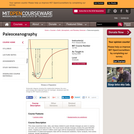
This class examines tools, data, and ideas related to past climate changes as seen in marine, ice core, and continental records. The most recent climate changes (mainly the past 500,000 years, ranging up to about 2 million years ago) will be emphasized. Quantitative tools for the examination of paleoceanographic data will be introduced (statistics, factor analysis, time series analysis, simple climatology).
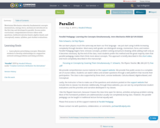
Newtonian Mechanics whereby fundamental concepts (momentum, energy, force, motion) are introduced on the first day and developed in parallel. Access entire curriculum: comprehensive lecture videos with questions, textbook (calculus based, algebra based, and conceptual), exams, syllabus, past student evaluations.

Newtonian Mechanics whereby fundamental concepts (momentum, energy, force, motion) are introduced on the first day and developed in parallel. Access entire curriculum: comprehensive lecture videos with questions, textbook (calculus based, algebra based, and conceptual), exams, syllabus, past student evaluations.
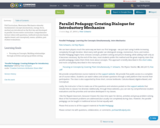
Full Curriculum, Newtonian Mechanics whereby fundamental concepts (momentum, energy, force, motion) are introduced on the first day and developed in parallel. Access entire curriculum: comprehensive lecture videos with questions, textbook (calculus based, algebra based, and conceptual), exams, syllabus, past student evaluations.
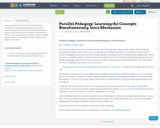
Newtonian Mechanics Full Curriculum whereby fundamental concepts (momentum, energy, force, motion) are introduced on the first day and developed in parallel. Access entire curriculum: comprehensive lecture videos with questions, textbook (calculus based, algebra based, and conceptual), exams, syllabus, past student evaluations.

Essential Graduate Physics, Lecture Notes and Problems This Book is brought to you for free and open access by the Department of Physics and Astronomy at Academic Commons. It has been accepted for inclusion in Essential Graduate Physics by an authorized administrator of Academic Commons. For more information, please contact mona.ramonetti@stonybrook.edu, hu.wang.2@stonybrook.edu.

Essential Graduate Physics, Lecture Notes and Problems This Book is brought to you for free and open access by the Department of Physics and Astronomy at Academic Commons. It has been accepted for inclusion in Essential Graduate Physics by an authorized administrator of Academic Commons. For more information, please contact mona.ramonetti@stonybrook.edu, hu.wang.2@stonybrook.edu.

Essential Graduate Physics, Lecture Notes and Problems This Book is brought to you for free and open access by the Department of Physics and Astronomy at Academic Commons. It has been accepted for inclusion in Essential Graduate Physics by an authorized administrator of Academic Commons. For more information, please contact mona.ramonetti@stonybrook.edu, hu.wang.2@stonybrook.edu.

Essential Graduate Physics, Lecture Notes and Problems This Book is brought to you for free and open access by the Department of Physics and Astronomy at Academic Commons. It has been accepted for inclusion in Essential Graduate Physics by an authorized administrator of Academic Commons. For more information, please contact mona.ramonetti@stonybrook.edu, hu.wang.2@stonybrook.edu.